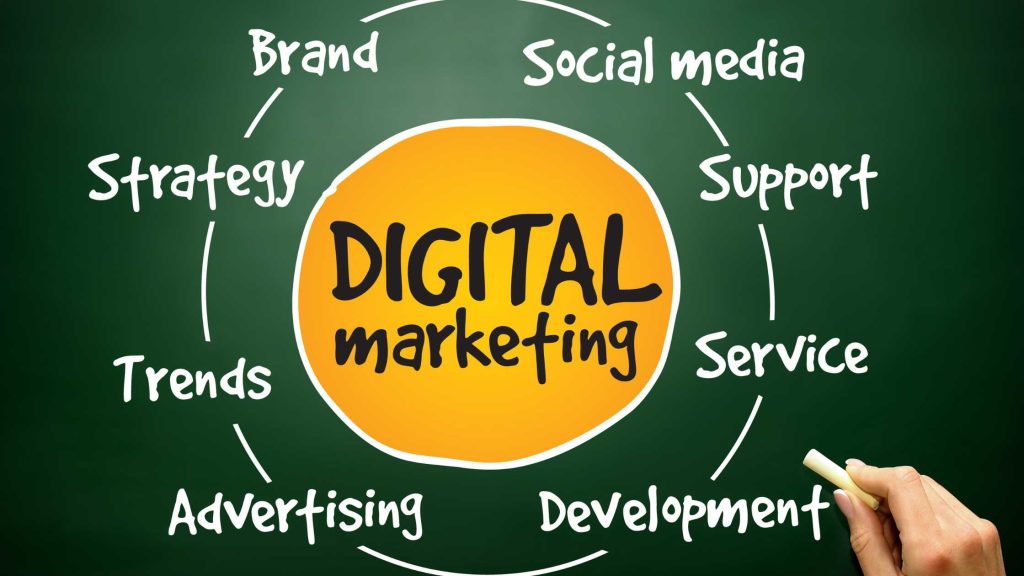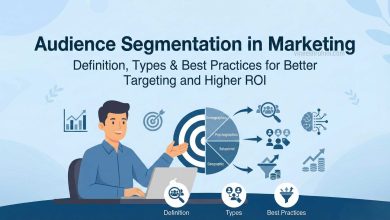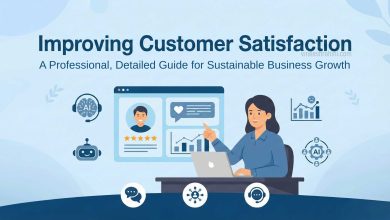How to Create a Digital Marketing Plan : Comprehensive Guide 2025
How to Create a Digital Marketing Plan : In today’s fast-changing online world, every business needs a strong and structured digital marketing plan. A proper marketing plan helps brands reach the right audience, use the right channels, and generate consistent, measurable results. Without a clear roadmap, businesses waste money, time, and effort chasing scattered ideas that don’t align with their goals.
Table of Contents
This Comprehensive Guide 2025 will walk you through how to create a powerful, data-driven digital marketing plan, including how to set objectives, identify audiences, select marketing channels, allocate budgets, and measure performance. Let’s dive into how to build a marketing strategy that delivers real growth in 2025.
Importance of a Digital Marketing Plan in 2025

In 2025, online competition is tougher than ever. Businesses are using AI, automation, and advanced analytics to target their customers more effectively. Without a clear plan, your marketing efforts will lack focus and direction. A digital marketing plan defines what you’re trying to achieve, who your ideal customers are, how you’ll reach them, and what success looks like. It connects your marketing activities to measurable business goals such as lead generation, sales, brand awareness, or customer retention.
Also Read : The Future of Influencer Marketing with AI : Comprehensive Guide 2025
The evolution of digital platforms, privacy regulations, and customer behavior has made it essential for brands to plan campaigns with precision. Consumers expect personalized content and fast, seamless experiences. A structured digital marketing plan ensures your brand can meet those expectations efficiently and consistently.
Step 1: Set Clear and Measurable Goals
Every marketing plan starts with setting clear, actionable, and measurable goals. Use the SMART framework (Specific, Measurable, Achievable, Relevant, and Time-bound) to define your objectives. Examples of strong digital marketing goals include:
- Increasing website traffic by 50% in six months
- Generating 2,000 new qualified leads per month
- Achieving a 25% growth in online sales within a year
- Reducing customer acquisition cost (CAC) by 15%
When your goals are clearly defined, it’s easier to track performance and make data-driven decisions. Link these marketing objectives directly to your overall business targets so your team stays focused on results, not just activity.
Step 2: Research Your Market, Competitors, and Customers
In digital marketing, knowledge is power. You need to understand the market you’re entering, who your competitors are, and what your customers want. Conduct three main types of research:
1. Market Research:
Identify the size, trends, and potential growth opportunities in your niche. Study what’s driving demand and what challenges or gaps exist in the market.
2. Competitor Analysis:
Analyze your competitors’ strategies. Look at their SEO performance, social media presence, ad campaigns, and content style. Understand what works for them and where they fall short so you can identify opportunities to stand out.
3. Customer Research:
Create detailed buyer personas that represent your ideal customers. Include their age, income, interests, problems, goals, and buying habits. Use surveys, interviews, and analytics tools to gather insights.
This research will form the foundation of your digital marketing strategy, helping you choose the right messages, channels, and offers.
Step 3: Define Your Target Audience
Once your research is complete, identify who exactly you want to reach. Your target audience is the group of people most likely to buy your product or service. Break down your audience into segments such as demographics, geography, interests, and online behaviors.
Creating buyer personas makes your targeting more accurate. For example:
- Tech-Savvy Professionals: Interested in productivity tools and prefer LinkedIn ads.
- Budget-Conscious Shoppers: Engaged by discounts and product comparisons.
- Homeowners: Likely to search for local services or home improvement solutions.
When you know your audience well, you can craft personalized content and ads that grab attention and build trust.
Step 4: Develop a Strong Brand Message
Your brand message communicates what you stand for and why customers should choose you. It’s more than just slogans — it’s your value proposition. Your message should answer:
- What do you offer?
- Why is it valuable?
- Why should customers choose you over competitors?
Keep your messaging consistent across all platforms — website, social media, email, and ads. Consistency builds recognition and credibility. Use simple, emotional, and customer-focused language.
Step 5: Choose Your Marketing Channels
A successful digital marketing plan combines multiple online channels. Choose the right platforms based on your audience and goals:
- Search Engine Optimization (SEO): Focus on ranking high for relevant keywords. Use blog posts, landing pages, and optimized site content to attract organic traffic.
- Pay-Per-Click (PPC) Advertising: Use G Ads, Bing Ads, or YT Ads to target high-intent buyers quickly.
- Social Media Marketing: Platforms like Insta, FB, LinkedIn, and TT allow you to build relationships and showcase your brand personality.
- Content Marketing: Create blogs, videos, infographics, and guides that educate and attract customers.
- Email Marketing: Use newsletters, drip campaigns, and automation to nurture leads and retain customers.
- Influencer and Affiliate Marketing: Partner with influencers or affiliates to reach new audiences and build credibility.
Each channel serves a different purpose. A good plan integrates these platforms to form a balanced, multi-channel approach.
Step 6: Create a Content Strategy

In 2025, content remains the foundation of every digital marketing plan. High-quality content builds trust, educates audiences, and drives traffic. Develop a content strategy based on your buyer journey:
- Awareness Stage: Blog posts, videos, social media content that introduces your brand and educates prospects.
- Consideration Stage: Case studies, comparison guides, and webinars that help customers evaluate solutions.
- Decision Stage: Testimonials, product demos, free trials, and offers that motivate purchase.
Use a content calendar to organize publishing dates and ensure consistency. Optimize all content for SEO using relevant keywords, structured headings, and strong calls to action (CTAs).
Step 7: Budget Allocation and Planning
Budget allocation is crucial. Decide how much you will invest in each marketing channel based on your goals, industry, and past performance.
For example:
- SEO and content: 30%
- Paid ads: 40%
- Email marketing: 10%
- Social media: 10%
- Tools and software: 10%
Track your return on investment (ROI) for each channel. Avoid overspending on low-performing platforms and redirect funds to those generating better conversions.
Step 8: Build and Implement Automation Systems
Automation tools simplify marketing and make it scalable. In 2025, automation is not optional — it’s essential. Use automation to handle:
- Email campaigns
- Social media scheduling
- Lead scoring and nurturing
- Customer follow-ups
Automation platforms like HubSpot, ActiveCampaign, and Mailchimp can help streamline your workflow and ensure no lead falls through the cracks. Combine automation with personalization to deliver timely and relevant communication.
Step 9: Set Up Analytics and Tracking
What you can’t measure, you can’t improve. Use analytics to track every important metric, such as:
- Website traffic
- Conversion rates
- Click-through rates (CTR)
- Cost per acquisition (CPA)
- Customer lifetime value (CLV)
Set up G Analytics 4 (GA4), social media insights, and CRM dashboards to collect and visualize data. Use this information to make informed decisions and adjust your strategy regularly.
Step 10: Test, Optimize, and Refine
A great digital marketing plan is never static. Regularly test different strategies, creative materials, and offers. A/B testing allows you to identify what works best and eliminate what doesn’t.
- Test ad copies, images, CTAs, and landing pages.
- Optimize campaigns based on conversion rates and ROI.
- Refine your target audience using performance data.
Continuous optimization helps you stay ahead of trends and competitors while maximizing every marketing dollar.
Step 11: Build the Right Team and Tools
Even the best strategy needs the right people and technology. Hire or train specialists for areas like SEO, paid media, content creation, analytics, and automation. Equip your team with modern tools — project management apps, CRM systems, AI content assistants, and collaboration platforms.
Working with the right team ensures that your plan is executed efficiently and with accountability.
Step 12: Follow Privacy and Compliance Regulations
As data privacy laws tighten worldwide, it’s critical to comply with regulations like GDPR and India’s Digital Personal Data Protection Act. Always be transparent about how you collect and use customer data. Offer easy opt-outs and maintain trust through secure data handling.
A compliant marketing plan not only protects your brand legally but also strengthens your relationship with customers.
Step 13: Scale Your Marketing Efforts
Once your campaigns deliver consistent results, it’s time to scale. Expand into new markets, launch localized campaigns, or introduce new product lines. Replicate what’s working best while exploring new formats like short-form video content, AI-driven personalization, and interactive ads.
Scalability depends on strong systems — analytics, automation, and content production pipelines.
Step 14: Review and Update Regularly
The digital landscape changes fast. Review your marketing plan every quarter to adapt to trends, algorithm updates, and consumer behavior shifts. Set up monthly performance reports and team review meetings to discuss progress and roadblocks.
A good plan evolves with your business and technology. Keep improving it to stay competitive in 2025 and beyond.
How to Create a Digital Marketing – Conclusion

Creating a digital marketing plan in 2025 means blending creativity with data, technology, and strategy. It’s about defining clear goals, understanding your audience, selecting the right mix of channels, and continuously improving based on analytics. When done right, a digital marketing plan helps you attract leads, grow sales, and build a strong brand presence online.
Buy Now : AIOSEO – All in One SEO Plugin For WordPress
Remember — success doesn’t come from guessing. It comes from planning, testing, measuring, and optimizing. Stay flexible, data-driven, and customer-focused, and your marketing efforts will produce consistent long-term results.
Disclaimer : This guide is for educational purposes only. Marketing practices, tools, and algorithms evolve frequently, and outcomes may vary by industry. Always conduct your own research, consult professionals when needed, and ensure compliance with applicable advertising and data privacy laws before implementing any digital marketing strategy.



